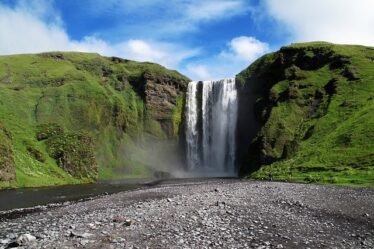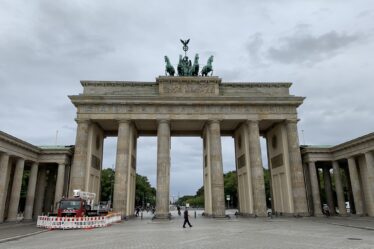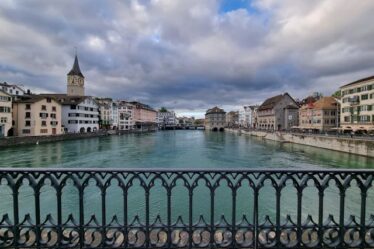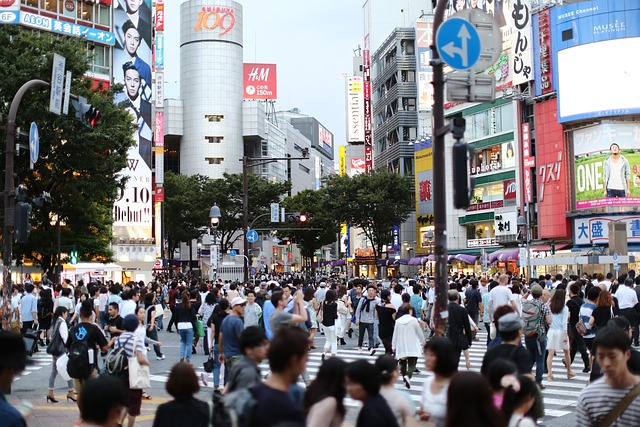
Tokyo, Japan’s bustling metropolis, is an enchanting destination that harmoniously blends tradition with innovation. From the impressive futuristic buildings to the peaceful corners of the temples, each neighborhood of the city has its own unique identity. In four days, we had the opportunity to discover the culture, history and natural beauty of the region, but also to live our own adventure in one of the world’s most iconic destinations.
Tokyo is a city that never ceases to amaze you – a living organism full of colors, sounds and smells that enchant all the senses.
Read also: First time in Japan? 8 things you should know!
Day 1: First day in Tokyo
We flew from Europe to Tokyo with Etihad Airways via Abu Dhabi in November when you can find airline tickets at a very good price. We landed, midday, at Narita Airport in Tokyo, from where it took us about 2 hours to go through passport control, pick up our bags, buy esim for unlimited data, find the office to schedule the activation of the JR Pass and book the first bullet train.
Book your flight tickets to Tokyo, here.
Then we took the NARITA EXPRESS train to central Tokyo. It should be noted here that a taxi would have costed us 120€, whilst we arrived at the apartment with only 18€ per person. After about 1.5 hours, we found ourselves in a very quiet neighborhood just outside of the Shinjuku area that was a 20 minute subway ride from downtown Shinjuku. The apartment we booked had two bedrooms and cost us 470€ in total for 4 nights.
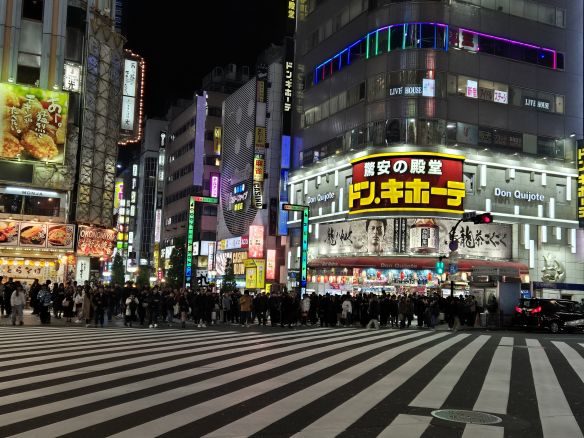
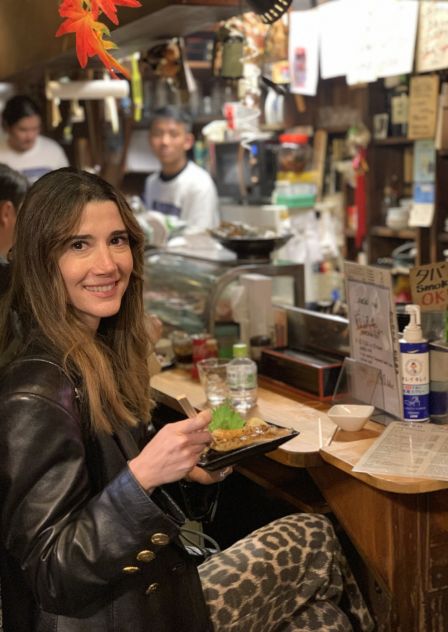
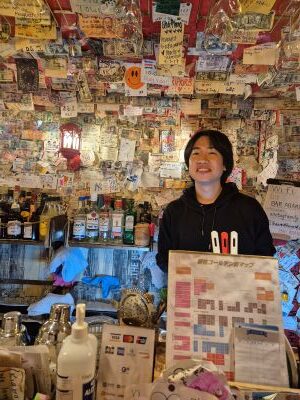
By the time we got settled it was evening and being hungry, we hit the roads and made our first stop at Omoide Yokocho. A small neighborhood full of nostalgia, narrow streets and traditional yakitori restaurants. Here we immediately felt the authentic side of Tokyo, away from the fast pace of the city. Our evening ended in the Kabukicho neighborhood, the bright and lively “area that never sleeps.” The neon lights and intense nightlife gave a completely different dimension to our trip. We got lost in its alleys and closed our 1st day in Tokyo by enjoying our first sake at the ARAKU bar.
Day 2: The Tokyo of tradition and tranquility
The next morning, our day started with a morning walk in Tsukiji Fish Market, Tokyo’s famous fish market. Amidst locals and other travelers crowding the market, we sampled grilled seafood and various seafood snacks, such as dried squid, in the morning. We then headed to Yoyogi Park to relax in the absolute tranquility and greenery. Yoyogi Park is the 5th largest and most central park in Tokyo. It was created for the 1964 Olympic games, but is still used today.
Right next to the park is the Meiji Temple, one of Tokyo’s most important temples. The temple was built in 1921, dedicated to Emperor Meiji and his wife. It is surrounded by a beautiful forest with 120,000 trees that makes you forget you are in Tokyo. The spirituality of the place was impressive and allowed us to connect with Japanese tradition.
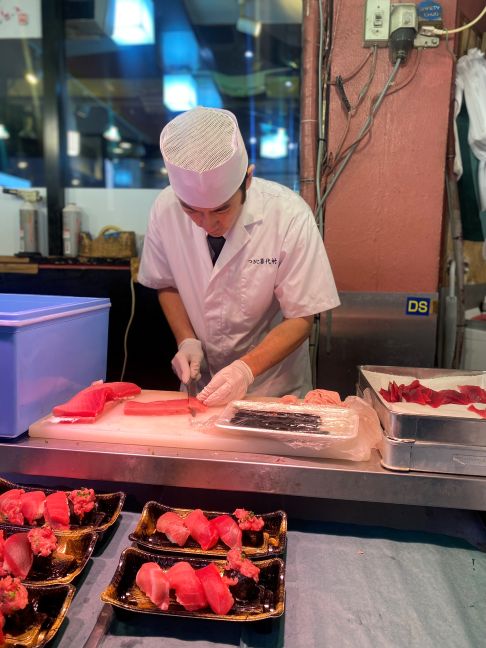
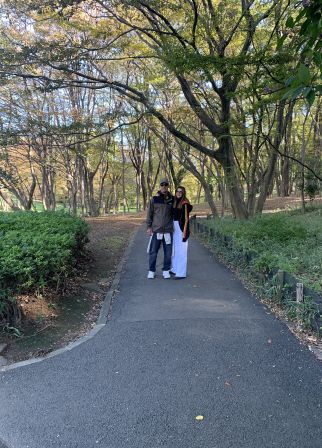
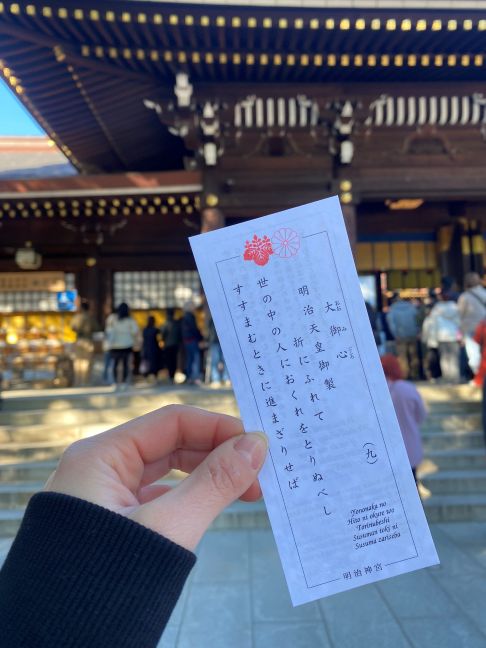
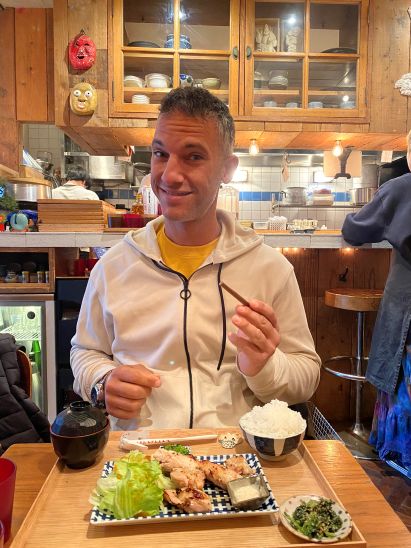
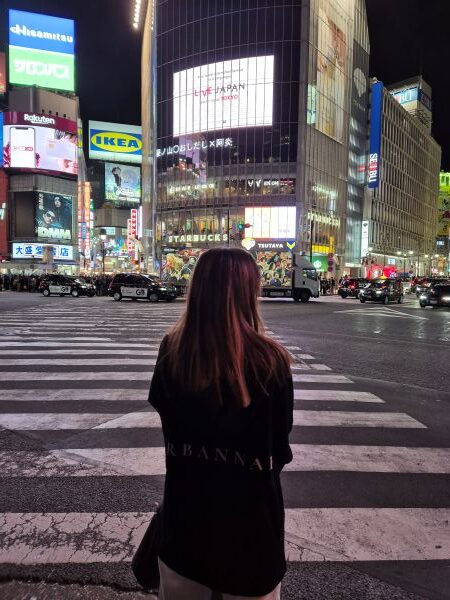

At noon we ended up in the nearest Harajuku area to enjoy lunch at The Teisyoku Shop which we highly recommend. Then we continued walking around the area, ending up in the afternoon crossing the famous Shibuya Scramble Crossing, the most photographed intersection with the heaviest pedestrian traffic in the world. The energy of the area was contagious. If you want to admire the intersection from above, you can go up to the top floor of the MAGNET by Shibuya 109 department store, where it will cost you around 11€ to enter. The evening ended with a Japanese whiskey tasting at the Shinjuku Whiskey Salon, which also features snake venom rum!
Day 3: Technology and history
On the third day we headed to Akihabara, the heart of pop culture and technology, where we explored shops full of electronics, manga and anime. In the afternoon we devoted our time to Senso-ji Temple, the oldest Buddhist temple in Tokyo, which impressed us with its architecture and peaceful atmosphere. It was founded in 628 AD. and is dedicated to Kanon, the goddess of mercy.
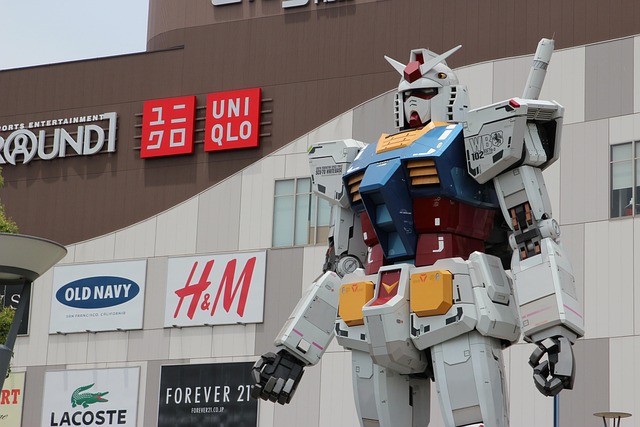
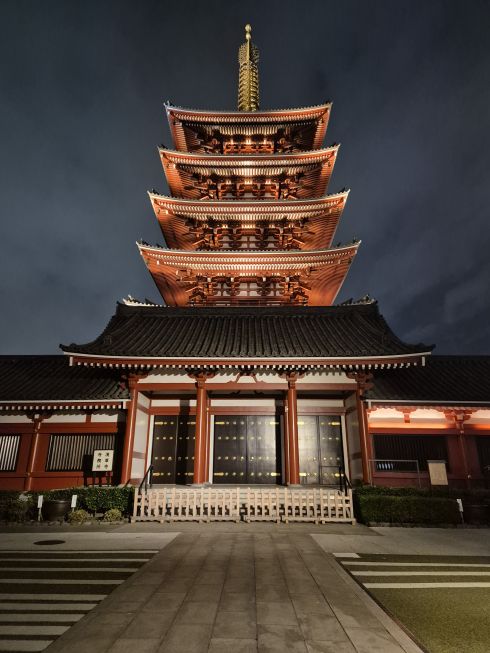
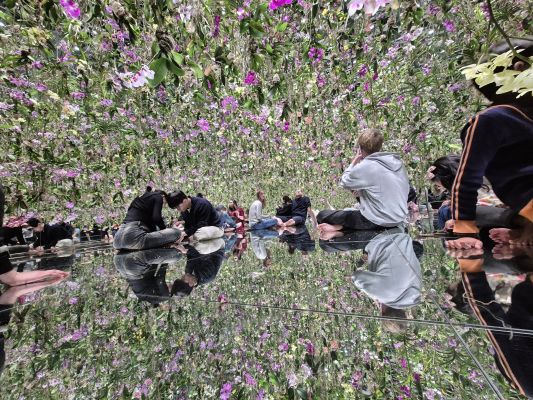
In the evening, we had a unique experience at TeamLab Planets, at the famous Tokyo Museum of Modern Art. It is an interactive art space that combines light, water and sound. It was a pleasant experience but one we would not choose again or recommend.
Day 4: Day trip to Mount Fuji
Our last day was dedicated to an organized excursion that we booked through Get your Guide near the sacred mountain Fuji. Mount Fuji, the highest mountain in Japan, with an altitude of 3,776m. is an active volcano. The climbing season usually runs from July 10 to September 10, with hundreds of people attempting it each year.
From the first moment we saw the majesty of the mountain, we were in awe. The horizon was spotlessly clear of clouds and the mountain clearly visible, a very rare phenomenon. It was our lucky day! We went boating at Kawaguchi Lake, a scenic spot that offers excellent views of Mount Fuji. The calm of the lake and the snowy mountain landscape was a perfect contrast to the hectic pace of Tokyo.
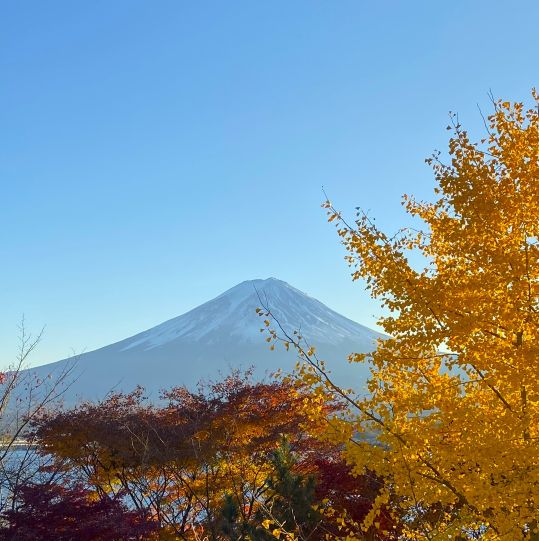
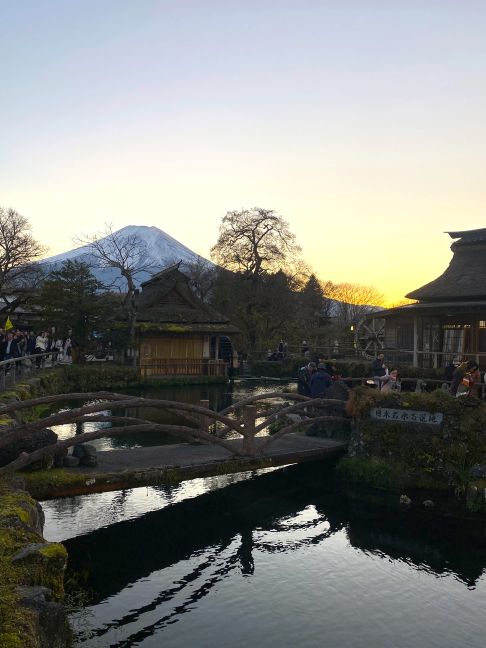
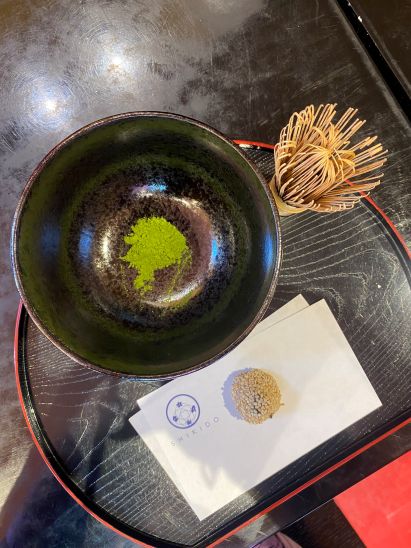
In addition, we visited the picturesque ninja village, Oshino Hakkai. Oshino Hakkai is a complex of eight crystal clear lakes formed from the melted snow of Mount Fuji, which has been filtered through porous volcanic rocks for decades, giving the water exceptional clarity and richness in minerals. These lakes, known as the “Eight Seas of Oshino”, are located in the village of Oshino, between Lakes Kawaguchiko and Yamanakako, in an area that was once home to a sixth lake, which dried up centuries ago.
We then took part in a unique experience of making matcha tea, while learning about its importance in Japanese culture and its rich history. Matcha tea has deep roots in Japanese culture, with its introduction attributed to the Buddhist monk “Eisai” in the 12th century. Originally used by Zen monks to enhance their concentration and clarity during meditation, later in the 16th century it developed into a central element of the Japanese tea ceremony known as “chanoyu”. This ceremony reflects the principles of harmony, respect, purity and tranquility, being an important cultural event in Japan.
Book the day trip to Mount Fuji, here.
Souvenir from Tokyo
The grocery store with the largest variety, both in terms of souvenirs (food, toys, clothing, household items), and prices is the Don Quijote Shinjuku Kabukicho. It’s always crowded, so expect to spend a little more time than expected. Have your passport with you, because with purchases over 5,500 yen, i.e. about 34€, you avoid the tax. Keep in mind that tax free on purchases of 5,500 yen or more will be achieved at most stores in Tokyo.
Very nice market for souvenirs were also in the tourist shops around the Senso-ji Temple. There you will find excellent Japanese lanterns and, among other things, quality kimono sets (pants with matching kimono) at very good prices (around 30 to 40€ per set).
Flavors from Tokyo
One of the most memorable parts of our stay in Tokyo was the food. Tokyo is a culinary paradise that satisfies every palate. At Tsukiji Fish Market, we tasted the freshest fish we have ever tasted. In the small restaurants of Omoide Yokocho, we enjoyed yakitori (grilled chicken on a straw), but also grilled salmon, while in Akihabara we tried omelette with rice and beef burger at Kanda Tamagoken Akihabara Store. A delicious and particularly filling dish that we liked quite a bit. Of course, we couldn’t leave without trying ramen soup. Our experience at a traditional ramen bar was undisputable: steamy broth, handmade noodles and perfectly marinated pork.
Shipping luggage from Tokyo
In Japan, you can send your luggage from Tokyo to other cities through delivery services offered by hotels and 24-hour markets such as 7-Eleven. These services, known as “takkyubin” or “takuhaibin”, allow the convenient transfer of luggage, making it easier for you to travel without the weight of luggage. You deliver your suitcase(s) to the cooperating points and pick them up at the destination you want in 1-2 days or on a predetermined date. This system is particularly popular among travelers as it offers flexibility and convenience during your trip to Japan.
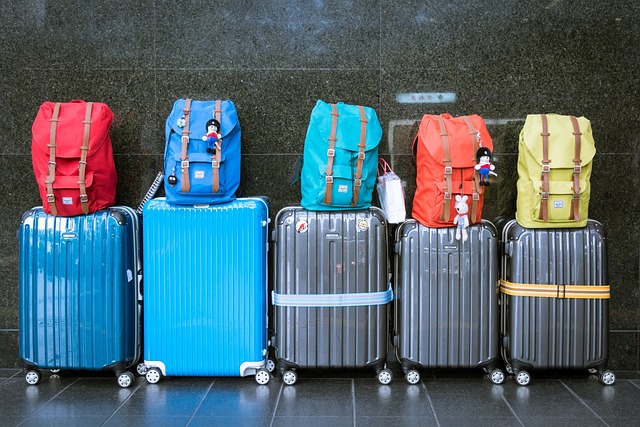
The cost of the luggage courier service depends on the size and weight of the luggage, as well as the shipping distance. For example, sending a regular suitcase from Tokyo to Kyoto costs an average of 2,000 and 3,000 yen, which is about 13 -19€. For a more accurate estimate of the cost, you can use the calculation tools provided by courier companies, such as Yamato Transport.
Tokyo is a destination that offers it all: vibrancy, tradition, modern art and natural beauty. In just four days, we felt like we explored an entire world. Whether you’re a fan of technology, history, or nature and gastronomy, Tokyo will offer you an experience you’ll remember forever! The next day, we took the bullet train to Osaka and from there in the morning directly to Mount Koyasan, where we would live an authentic and unforgettable experience of monk life.
Read also: First time in Japan? 8 things you should know!
See more about Tokyo, Japan in the highlight stories #TOKYO1 & #TOKYO2 on Ιnstagram

